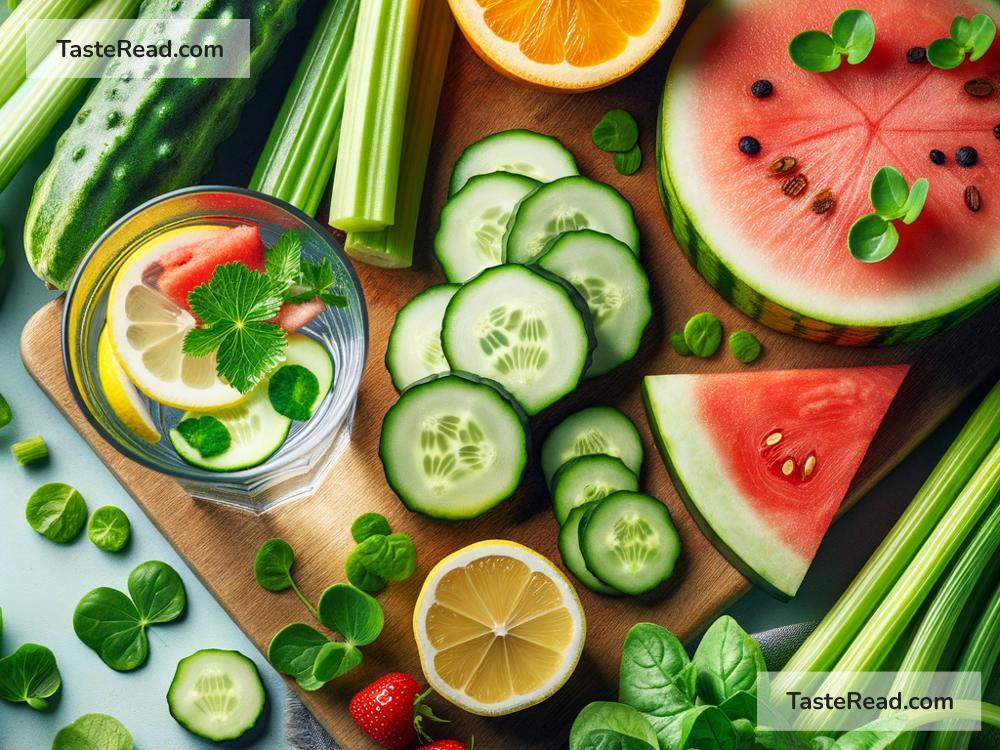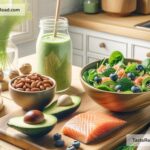Maintaining Fluid Balance with the Right Foods
Fluid balance in your body is important for feeling good and staying healthy. Your body is made up of about 60% water, so keeping the right amount of fluids is crucial for things like digestion, circulation, and temperature regulation. While drinking enough water is key, certain foods can also help improve fluid balance naturally. These foods can supply electrolytes, boost hydration, and support your kidneys in managing fluids.
Here’s a guide to some of the best foods for improving fluid balance in simple and easy-to-understand terms.
What Is Fluid Balance?
Fluid balance means your body has the right amount of water and electrolytes. When everything is in balance, your body works smoothly. If this balance is off, you might feel dehydrated, bloated, or tired. Electrolytes (such as sodium, potassium, magnesium, and calcium) play a major role in fluid regulation. They help your cells absorb water, maintain nerve and muscle function, and keep your body in harmony.
You can get electrolytes and hydration from the food you eat, not just from water and other drinks. Let’s look at foods that can help you stay balanced.
1. Water-Rich Fruits and Vegetables
Fruits and vegetables with high water content are great for hydration. These foods are refreshing, low in calories, and full of vitamins and minerals.
-
Cucumber: Cucumbers are 95% water, making them a great choice for staying hydrated. They also contain potassium, which helps regulate fluid levels.
-
Watermelon: True to its name, watermelon is packed with water and also contains magnesium and potassium. It’s a sweet, hydrating snack for warm days.
-
Celery: Celery is another veggie that’s mostly water. It has sodium and potassium to maintain fluid levels, plus fiber to support digestion.
-
Oranges: Oranges are hydrating fruits rich in vitamin C and potassium. Their sweet juice can be a refreshing way to boost hydration.
-
Bell Peppers: Bell peppers (especially red ones) are loaded with water, fiber, and vitamins. They’re great for staying hydrated and supporting skin health.
2. Foods Rich in Potassium
Potassium is one of the key electrolytes that help your body balance fluids. It keeps water inside your cells and works alongside sodium to maintain proper hydration.
-
Bananas: Bananas are a top source of potassium. Add them to smoothies or eat them on their own as a snack to help balance your fluid levels.
-
Avocado: Avocados are rich in potassium and healthy fats. They also contain magnesium, supporting overall hydration.
-
Sweet Potatoes: Sweet potatoes are another excellent source of potassium. They’re filling, nutritious, and easy to add to meals.
-
Spinach: This leafy green is full of potassium and other important nutrients. Spinach can be eaten raw in salads or cooked as a side dish.
3. Coconut Water
Coconut water is often called “nature’s sports drink” because it’s high in electrolytes, including potassium, sodium, and magnesium. It’s a natural, low-calorie option for rehydrating your body after exercise or on hot days.
Drinking coconut water can be better than consuming sugary sports drinks, which have extra calories and artificial ingredients. Keep in mind that moderation is important, as coconut water does contain natural sugars.
4. Foods with Magnesium
Magnesium is another electrolyte that supports fluid balance. It helps keep your muscles and nerves working properly and plays a role in regulating blood pressure.
-
Nuts and Seeds: Almonds, cashews, and sunflower seeds are rich in magnesium. These make perfect snacks or can be added to yogurt or oatmeal.
-
Dark Chocolate: Believe it or not, dark chocolate (with at least 70% cocoa) is a good source of magnesium. Enjoy a small piece for both hydration and heart health.
-
Whole Grains: Brown rice, quinoa, and oats are high in magnesium. They’re filling, healthy, and help maintain hydration and energy levels.
5. Low-Sodium Foods
While sodium is an important electrolyte for fluid balance, too much of it can lead to water retention and bloating. Moderating your salt intake is key. Focus on eating fresh, whole foods with no added salt.
- Avoid processed and packaged foods such as chips, canned soups, and fast food. These usually have a lot of sodium that can throw off your fluid balance.
6. Herbs and Spices
Certain herbs and spices can naturally support hydration and fluid balance while adding flavor to your meals.
- Mint: Mint can be used in teas or recipes to refresh your body and aid digestion.
- Ginger: Ginger has anti-inflammatory properties and helps your body maintain water balance.
Tips for Staying Hydrated
While eating hydrating foods is helpful, drinking water is still the main way to stay hydrated. Aim for 8–10 glasses of water daily (or more if you’re active or in a hot climate). A mix of water and hydrating foods can keep your body balanced and energized.
If you notice signs of dehydration like dark-colored urine, headaches, or dry skin, increase your water intake and eat water-rich foods. On the other hand, avoid overloading on salty snacks, as they can cause bloating and water retention.
Conclusion
Staying hydrated isn’t just about drinking water. Picking the right foods can boost your fluid balance naturally. Fruits like watermelon, vegetables like cucumber, and nutrient-rich foods like avocados and almonds all help your body stay balanced.
By combining these foods with plenty of water, you can feel energized, refreshed, and ready to take on your day. Remember, hydration is not just a daily goal but a key part of living a healthy life!


